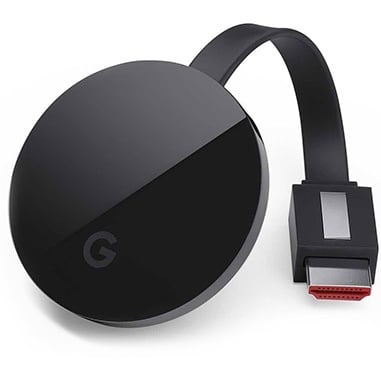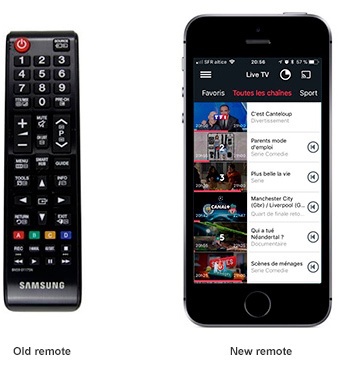
If Google offered a Chromecast solution purpose-built for the hospitality market, this would be it.
Every structured cabling system is unique. This is due to variations in:
We help you with :


An Internet Service Provider (ISP) is the industry term for the company that is able to provide you with access to the Internet. The ISP is the link or conduit between your computer and all the other “servers” on the Internet.
All internet connected devices run each request through their ISP in order to access servers to download web pages and files, and those servers themselves can only provide you those files through their own ISP.
A Router is a networking device that forwards data packets between computer networks. Routers perform the traffic directing functions on the Internet. A data packet is typically forwarded from one router to another router through the networks that constitute an internetwork until it reaches its destination node.
A router is connected to two or more data lines from different networks. When a data packet comes in on one of the lines, the router reads the network address information in the packet to determine the ultimate destination. Then, using information in its routing table or routing policy, it directs the packet to the next network on its journey.
Enterprise routers, connect large business or ISP networks up to the powerful core routers that forward data at high speed along the optical fiber lines of the Internet backbone


A Switch is a device in a computer network that electrically and logically connects together other devices. Multiple data cables are plugged into a switch to enable communication between different networked devices. Switches manage the flow of data across a network by transmitting a received network packet only to the one or more devices for which the packet is intended. Each networked device connected to a switch can be identified by its network address, allowing the switch to regulate the flow of traffic. This maximizes the security and efficiency of the network.
A Firewall is a network security device that monitors incoming and outgoing network traffic and decides whether to allow or block specific traffic based on a defined set of security rules.
Firewalls have been a first line of defence in network security for over 25 years. They establish a barrier between secured and controlled internal networks that can be trusted and untrusted outside networks, such as the Internet.


A data centre is a facility that centralizes an organization’s IT operations and equipment, and where it stores, manages, and disseminates its data. Data centre-house a network’s most critical systems and are vital to the continuity of daily operations.
It is the brain of a company and the place where the most critical processes are run.
Although data centre designs are unique, they can generally be classified as internet-facing or enterprise (or “internal”) data centres. Internet-facing data centres usually support relatively few applications, are typically browser-based, and have many users, typically unknown. In contrast, enterprise data centres service fewer users, but host more applications that vary from off-the-shelf to custom applications.
A focus has also been placed on initiatives to reduce the enormous energy consumption of data centres by incorporating more efficient technologies and practices in data centre management. Data centres built to these standards have been coined “green data centres.”
A Server is a computer program or a device that provides functionality for other programs or devices, called “clients”.
Servers can provide various functionalities, often called “services”, such as sharing data or resources among multiple clients, or performing computation for a client. A single server can serve multiple clients, and a single client can use multiple servers. A client process may run on the same device or may connect over a network to a server on a different device. Typical servers are database servers, file servers, mail servers, print servers, web servers, game servers, and application servers.


A Wireless Access Point transmits and receives information from wireless radio signals. This device allows a large business network or a Wi-Fi hotspot to connect computer equipment for easy sharing of data between devices. This type of arrangement reduces the need for hardwiring and cables.
Wireless access point devices use firmware, antennas and radio transceivers to capture and distribute data, usually aided by a router when used with a wired network. This connection provides a single point of entry for wireless devices connecting to the WAP network.
VOIP is an acronym for Voice over Internet Protocol, or in more common terms phone service over the Internet.VoIP is enabled by a group of technologies and methodologies used to deliver voice communications over the internet, enterprise local area networks or wide area networks.
Video conferencing is the technology that allows you to hold meetings with several correspondents who are located in different places while seeing them and talking to them in real time. It is different from simple video calling, which is normally one-to-one video communication.
Video conferencing has become more common and more accessible thanks to the advent and development of Voice over IP, which harnesses the underlying IP infrastructure of the Internet to make free communication possible. Packets of video data, along with packets of voice and other types of data, are carried on the Internet, thereby making voice and video communication free.


CCTV(Closed Circuit Television) is an electronic equipmentwhich helps in monitoring of behaviour, activities, or other changing information for the purpose of influencing, managing, directing, or protecting people.
A Biometric device is a security identification and authentication device. Such devices use automated methods of verifying or recognising the identity of a living person based on a physiological or behavioural characteristic. These characteristics include fingerprints, facial images, Iris prints and voice recognition.
A Computer Peripheral device is generally defined as any auxiliary device such as a computer mouse or keyboard that connects to and works with the computer in some way. Other examples of peripherals areRAM, Hard disk, Graphic Card, Printers/Scanners, Tape Drives, Headphones, Webcams and other accessories.

Fiberjet is currently the only hospitality provider to offer a totally secure Chromecast solution without the need for a proxy server or over-complicated network. Just as Google intended Chromecast to be used.
Some providers prefer Chromecast to be deployed on a wired network. When used in combination with Fiberjet WiFi, this is not needed. We ensure everything is setup correctly to deliver the very best streaming experience possible.
Our Room Area Network solution makes it easy to deploy Chromecast securely, but also enables any other IoT services such as wireless door locking, connected speakers and many many more.
"Fiberjet in innovative business WiFi and Fibre connectivity solutions since 2020, Fiberjet is trusted by thousands of customers across India to provide high-quality, robust networks."